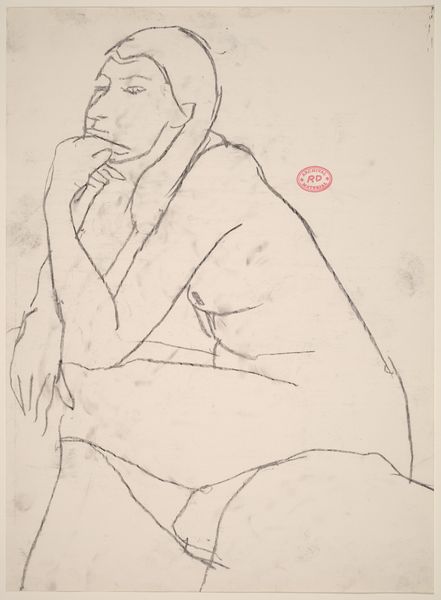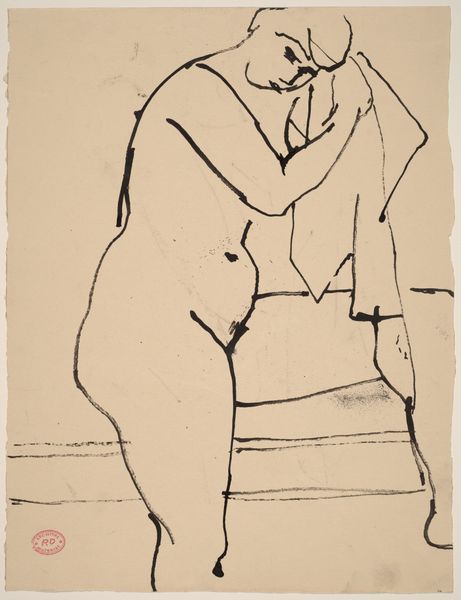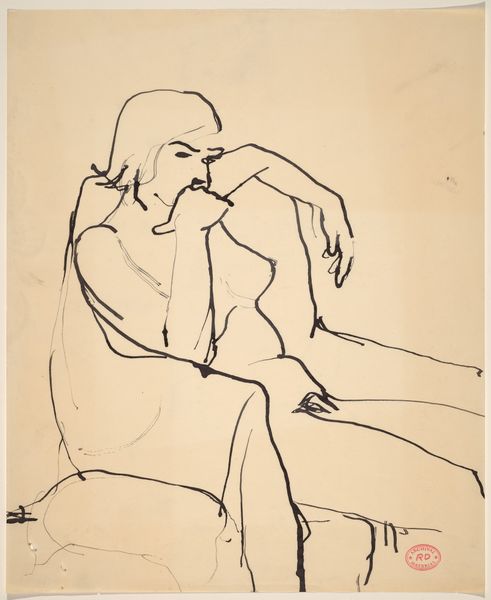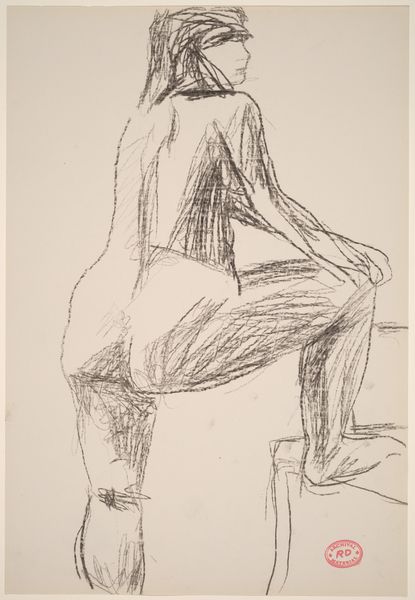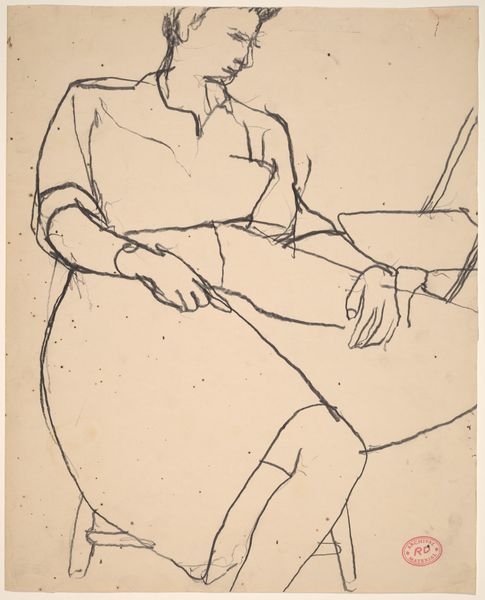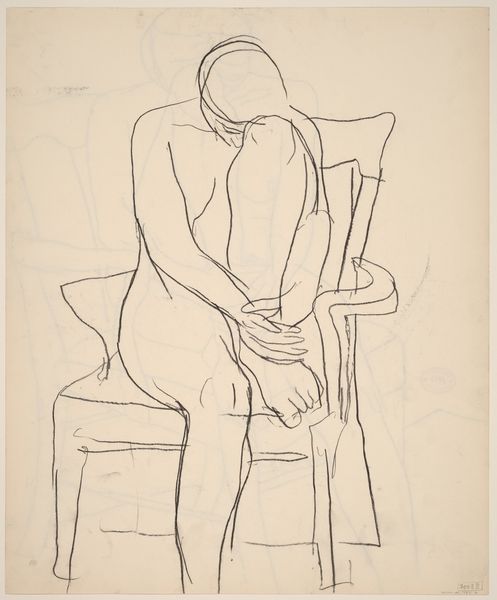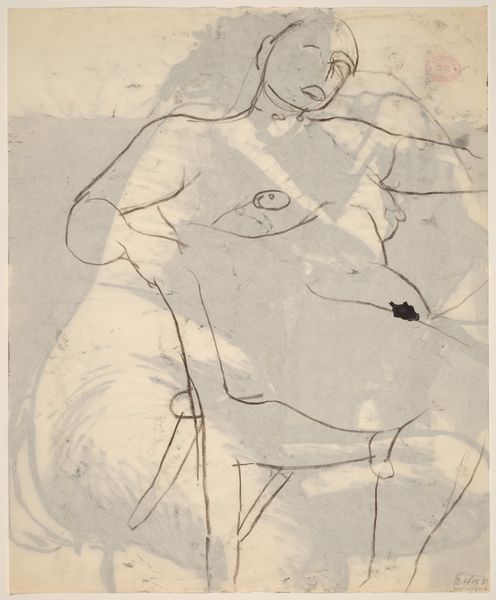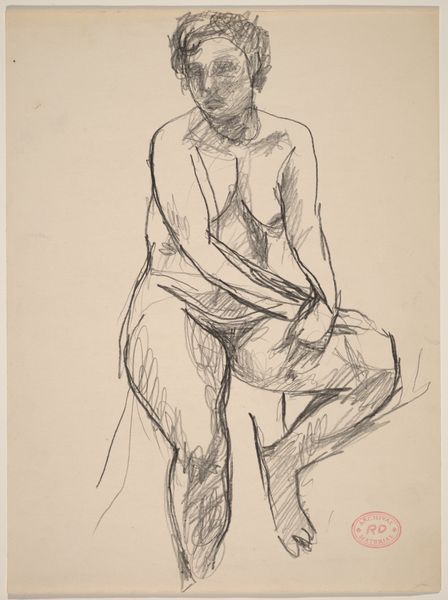![Untitled [nude with shirt pulled over her shoulder] [verso] by Richard Diebenkorn](/_next/image?url=https%3A%2F%2Fd2w8kbdekdi1gv.cloudfront.net%2FeyJidWNrZXQiOiAiYXJ0ZXJhLWltYWdlcy1idWNrZXQiLCAia2V5IjogImFydHdvcmtzLzg0ZGQyOTJiLWU3MzQtNDJjNS05MjJmLWY1ZDdmZWZmOGFjYi84NGRkMjkyYi1lNzM0LTQyYzUtOTIyZi1mNWQ3ZmVmZjhhY2JfZnVsbC5qcGciLCAiZWRpdHMiOiB7InJlc2l6ZSI6IHsid2lkdGgiOiAxOTIwLCAiaGVpZ2h0IjogMTkyMCwgImZpdCI6ICJpbnNpZGUifX19&w=3840&q=75)
Untitled [nude with shirt pulled over her shoulder] [verso] 1955 - 1967
0:00
0:00
drawing, pencil
#
drawing
#
figuration
#
bay-area-figurative-movement
#
pencil
#
nude
Dimensions: overall: 43.2 x 35.6 cm (17 x 14 in.)
Copyright: National Gallery of Art: CC0 1.0
Curator: I find myself immediately drawn in by the gestural lines, so immediate and evocative. It makes me wonder, what was Diebenkorn feeling in that moment, during the making of this work? Editor: Here we have Richard Diebenkorn's "Untitled [nude with shirt pulled over her shoulder] [verso]," a pencil drawing created sometime between 1955 and 1967. The subject of the artwork, a female nude draped in fabric, is quite traditional. Yet Diebenkorn's economical line and focus on form elevate it. One can analyze how traditional class hierarchies affect labor practices in creative fields by how Diebenkorn depicted his nude figure here in a manner that subverts conventional techniques and themes prevalent in drawing from this period. Curator: Yes, but I feel like it almost captures a breath, the in-between of being clothed and unclothed, as though she is captured in a fleeting moment. It's almost an intimate glimpse into the sitter's world. Editor: Perhaps. Looking closely at the pencil strokes, we see varying pressures, creating darker, more assertive contours that define the figure's left side. It raises some pertinent questions about mark-making. The availability, cost, and cultural perceptions surrounding materials like pencil inevitably shapes what artists can produce, especially since traditionally pencil and drawing was associated with preliminary work that eventually gets elevated to painting and becomes high art. Curator: I love that we're drawn to such different details. It speaks to Diebenkorn's mastery that it's like gazing at someone at a momentary glance while you are still trying to decide what they might mean, the bare bones of something not fully present. Editor: I appreciate how you put it; these subtle tonal shifts highlight how materiality informs Diebenkorn's conceptual choices here. From the standpoint of its making, examining drawings like this allows us to analyze labor practices from a social viewpoint and question long-standing artistic and creative norms. Curator: It is almost voyeuristic. Now that you put it that way, I can start to recognize these subtle distinctions... almost like it takes the hand of a materialist to guide my artistic gaze, a useful pairing, it seems. Editor: Hopefully this dialogue has sparked further consideration around art history's entrenched hierarchy between materials and the role they play in creating the very definition of art.
Comments
No comments
Be the first to comment and join the conversation on the ultimate creative platform.



